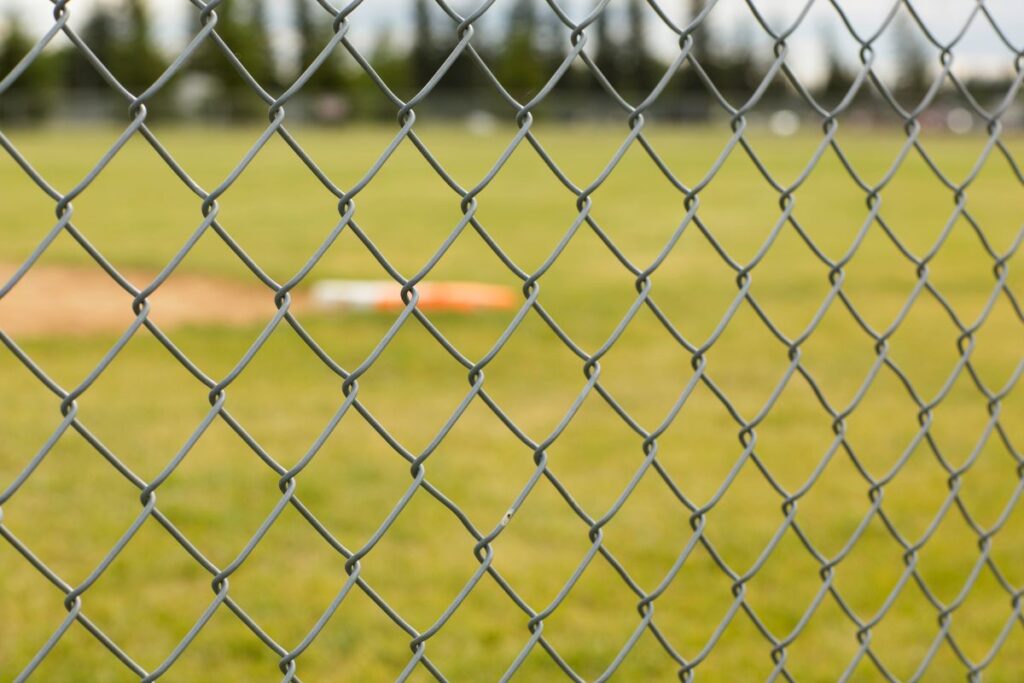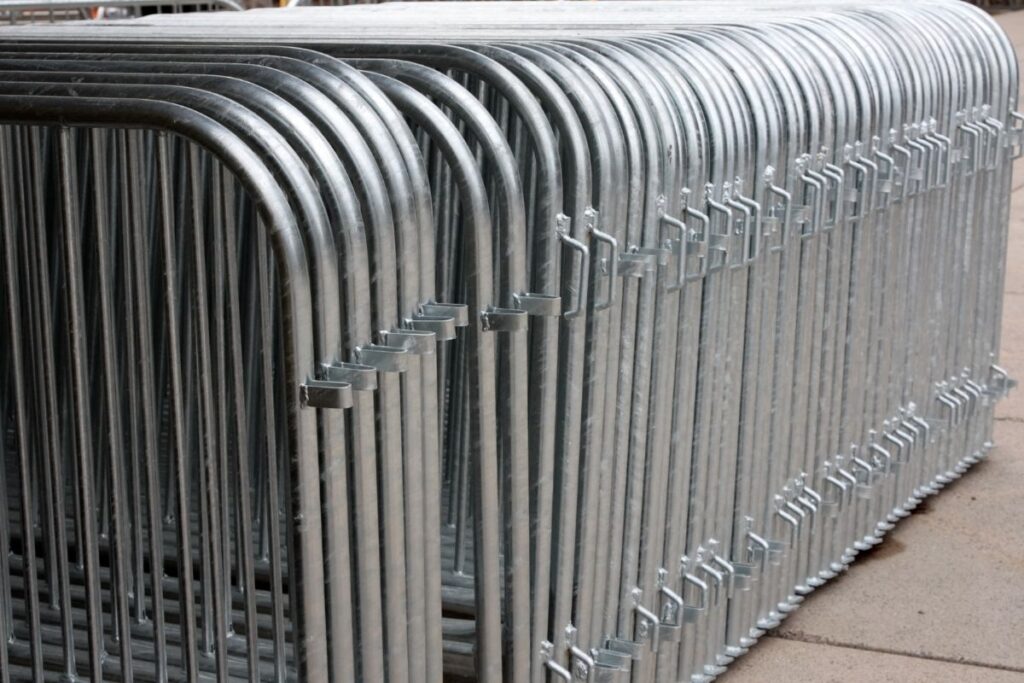Whether setting boundaries for sporting fields, temporary fencing to manage access or barriers for crowd safety, using fencing for sports events is crucial to ensuring a positive experience for spectators and players alike.
This blog aims to help explain the importance of fencing in sports, the different applications of sporting fences and the benefits of purchasing rather than hiring.
Why does sports fencing matter?
There are many different purposes for fencing at sporting events, regardless of size:
Event safety
In recent years, the primary reason for event safety is that sports fencing can effectively prevent many unwanted scenarios such as pitch invaders, crowd altercations, and anti-social behaviour. This is due to a physical barrier being present and reducing the odds of these scenarios from occurring. This also helps security and crowd control at events.

Improved event experience
By utilising fencing for sports events, event organisers can make the most efficient and optimal routing that allows for maximum usage of the space provided. This is extremely important if the spacing is small, meaning there is limited capacity.
It’s even better if temporary fencing is used, as this gives sports event organisers room to reroute the pathing quickly if needed (emergency, change of plans).

Different uses of sports fencing
While your mind may go straight to fencing that’s used to outline the perimeter of the field to the crowd, there is a wide range of uses for fencing at sporting events and venues.
Sport field perimeter
The obvious fence usage to discuss is the fence that separates the field or court from the general area. These fences can vary depending on the type of sporting area for which it is needed. Chain link is one of the most common types of fencing used for sporting fences in sporting venues such as tennis courts and cricket nets. They are both long-lasting and very durable, making them ideal for sporting events.
Crowd control barriers
As mentioned previously, crowds at sporting events can often be very large, depending on the size of the event as well as the importance of it (grand final, etc). Crowd control barriers are typically used in queuing entrances into sporting stadiums to help separate lines and manage crowd flow into the venue. These assist security at sporting events as they are able to separate groups from each other, potentially avoiding altercations.

Zoning fences
Temporary barriers in sports venues can be used to help segregate areas into zones. For example, you may have food stalls with an entertainment area right behind them. Having these pedestrian barriers between them helps separate the two areas and prevent any overlap. Temporary fencing is often used for this purpose as it gives you flexibility with moving it around quickly if required, making it effective for short term fencing.
Ball stop fencing
A situational usage of sporting fences at venues is ball stop fencing. As you can imagine, this is to prevent the ball from going out of the game area, for example indoor cricket nets. This helps minimise delay between plays (e.g. a point in tennis ends and players need to pick the ball up).
Banner display
Utilising fencing for sports advertising offers brands a chance to display their logo at events. Typically, you will see this around a football oval and tennis courts. This is a win-win situation as it generates funding for the event organiser as well as the sponsor, getting good value out of their sponsorship due to publicity. Printed banner mesh is the best material for banners on fencing at sports events.

Benefits of buying rather than hiring temporary fencing?
Generally, organisations hire out temporary sporting fences for events they host. However, it’s often more beneficial to purchase temporary fencing outright in the long run.
Affordability
If you’ve been running an annual sporting event for a few years or you’re looking at starting one you expect to host annually over the next decade, it will likely be worth purchasing temporary fencing for your sporting event rather than renting. Many expenses need to be taken into account when renting temporary fencing rather than purchasing, including:
- Labour expenses (installation, delivery, pick-up)
- Insurance costs (liability for damage to fencing or lost fencing)
By purchasing temporary fencing outright, it’s a one-time expense. The best part is that if you no longer need the fencing, you can sell it and get some of your original investment back.
Flexibility
If you’re hosting a sporting event that will need changes to the event layout or a venue changeover, owning temporary fencing allows you to move it around without being liable under the terms of a rental contract. You also get to work at your own pace rather than around a fencing rental company’s timeline, ensuring your sporting events will be ready on time.
Keep spectators safe with temporary sports fencing
TTFS provides optimal temporary fencing and crowd control barriers that can be used effectively at your sports event.
Whether it’s for schools, a community oval or professional venues, our temporary fencing and crowd barriers will ensure your event’s safety and help improve the flow of spectators.
With our fencing being highly durable and long-lasting, TTFS’s temporary fencing allows for easy installation, set-up and adjustments at your next game.
Frequently asked questions
How much fencing will I need for my sporting event?
This will be dependent on several factors such as what kind of sport is being played, what level of competition it is (amateur, professional), and whether it is a venue that’s permanent or only requires short term fencing.
Do I need someone to install it?
Again, this will depend on the fencing you’re working with. If it’s chain net fencing, you will likely want to hire a professional installation team as they will be risk-averse as well as know how best to install it. If you’re just working with temporary fencing, it’s easy enough to set up yourself as it’s prebuilt and straightforward to connect each fence.
How best can I store my temporary fencing when I don’t need it?
Typically, a warehouse or store room that has a covered roof is ideal for storing your temporary fencing. However this is not essential, as temporary fencing is designed to withstand all weather conditions and can be stored outside.

